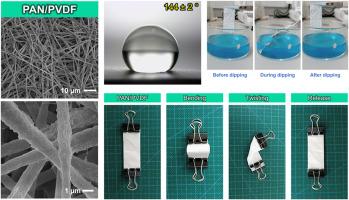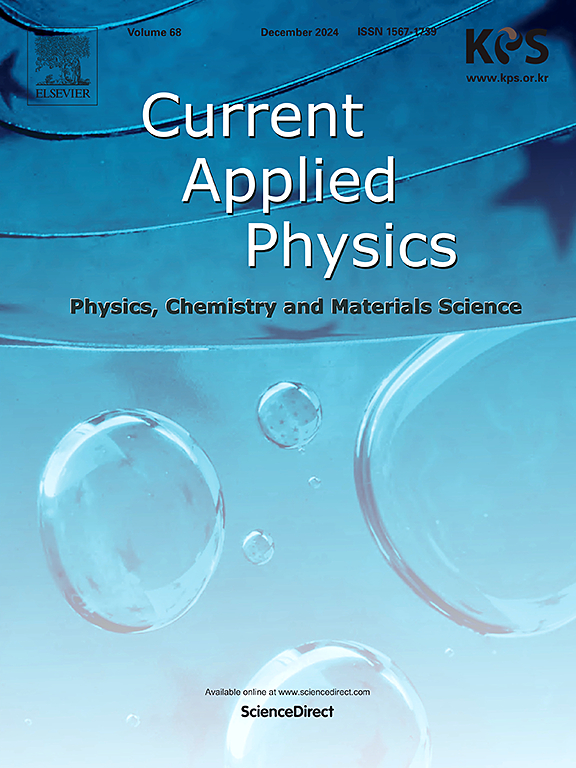Comparative morphological analysis of electrospun PAN/PVDF nanofibers for waterproof breathable membrane applications
IF 3.1
4区 物理与天体物理
Q3 MATERIALS SCIENCE, MULTIDISCIPLINARY
引用次数: 0
Abstract
Waterproof and breathable membranes are critical for protective textiles, filtration, and wearable applications. However, balancing water resistance with vapor permeability remains challenging. This study investigates the morphological effects of electrospun polyacrylonitrile/polyvinylidene fluoride (PAN/PVDF) nanofiber membranes on their waterproofness, breathability, and mechanical integrity. Varying polymer concentration can control fiber diameter (224–1379 nm) and bead formation, influencing membrane properties. Increasing fiber diameter enhances mechanical strength, with Young's modulus rising from 22.5 MPa to 34.1 MPa. All fabricated membranes exhibit excellent waterproofness, while the larger, bead-free fibers possess improved water vapor transmission and slightly reduced air permeability. FTIR analysis confirms consistent chemical composition across samples. These findings demonstrate that nanofiber morphology can be tailored to optimize performance, offering valuable insights for the development of multifunctional membranes for environmental, industrial, and wearable use.

静电纺PAN/PVDF纳米纤维防水透气膜的形态对比分析
防水和透气膜对防护纺织品、过滤和可穿戴应用至关重要。然而,平衡抗水性和透气性仍然是一个挑战。本研究研究了聚丙烯腈/聚偏氟乙烯(PAN/PVDF)纳米纤维膜的形态对其防水、透气性和机械完整性的影响。不同的聚合物浓度可以控制纤维直径(224-1379 nm)和珠粒的形成,影响膜的性能。纤维直径增大,机械强度提高,杨氏模量由22.5 MPa增加到34.1 MPa。所有制备的膜都具有优异的防水性能,而较大的无珠纤维具有改善的水蒸气透过性和略微降低的透气性。FTIR分析证实样品的化学成分一致。这些发现表明,纳米纤维形态可以定制以优化性能,为开发用于环境、工业和可穿戴用途的多功能膜提供了有价值的见解。
本文章由计算机程序翻译,如有差异,请以英文原文为准。
求助全文
约1分钟内获得全文
求助全文
来源期刊

Current Applied Physics
物理-材料科学:综合
CiteScore
4.80
自引率
0.00%
发文量
213
审稿时长
33 days
期刊介绍:
Current Applied Physics (Curr. Appl. Phys.) is a monthly published international journal covering all the fields of applied science investigating the physics of the advanced materials for future applications.
Other areas covered: Experimental and theoretical aspects of advanced materials and devices dealing with synthesis or structural chemistry, physical and electronic properties, photonics, engineering applications, and uniquely pertinent measurement or analytical techniques.
Current Applied Physics, published since 2001, covers physics, chemistry and materials science, including bio-materials, with their engineering aspects. It is a truly interdisciplinary journal opening a forum for scientists of all related fields, a unique point of the journal discriminating it from other worldwide and/or Pacific Rim applied physics journals.
Regular research papers, letters and review articles with contents meeting the scope of the journal will be considered for publication after peer review.
The Journal is owned by the Korean Physical Society.
 求助内容:
求助内容: 应助结果提醒方式:
应助结果提醒方式:


